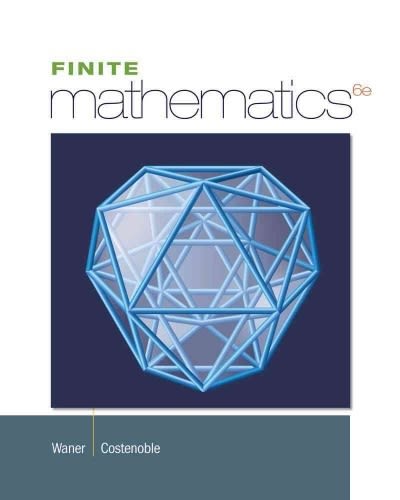Question
Random samples of 47 male students and 53 female students at the U of A were asked to state their car preference (American, European, and
Random samples of 47 male students and 53 female students at the U of A were asked to state their car preference (American, European, and Japanese). The resulting frequencies are shown in the following table. Is there enough evidence to conclude a difference in car preference between males and females?
American European Japanese
Male 16 10 21
Female 10 23 20
(a) In performing this statistical test, state the hypotheses.
H0: the distribution of preference is not the same for males and females vs. HA: the distribution of preference is the same for males and females
H0: the proportion of males is the same for each car preference vs. HA: the proportion of males is not the same for each car preference
H0: the distribution of gender is not the same for each car preference vs. HA: the distribution of gender is the same for each car preference
H0: the distribution of preference is the same for males and females vs. HA: the distribution of preference is not the same for males and females
H0: the proportion of females is the same for each car preference vs. HA: the proportion of females is not the same for each car preference
(b) What is the expected frequencies of each cell?Fill out the table. (Round your answers to 2 decimal places, if needed.)
American European Japanese
Male 12.22
Female 21.73
(c) What is the test statistic value for this hypothesis test? (Round your answers to 2 decimal places, if needed.)
TS=
(d) The test statistic follows a
a. chi-square distribution with df = 98
b. chi-square distribution with df = 2
c.t-distribution with df = 6
d.chi-square distribution with df = 6
e. t-distribution with df = 2
.
(e) Using the statistical table, the p-value is
a. 0.01 < p-value < 0.025
b.0.05 < p-value < 0.10
c.0.025 < p-value < 0.05
d.p-value > 0.10
e.0 < p-value < 0.005
f. 0.005 < p-value < 0.01
.
(f) Based on the p-value, those conducting the test should(?) a. reject b. fail to reject the null hypothesis at the significance level of 0.05.
(g) What is the appropriate conclusion?
There is insufficient evidence to conclude there is a difference in males and females for car preference.
There is insufficient evidence to conclude the proportion of males is not the same for each car preference.
There is sufficient evidence to conclude there is a difference in males and females for car preference.
There is sufficient evidence to conclude the proportion of males is not the same for each car preference.
There is sufficient evidence to conclude there is no difference in males and females for car preference.
Step by Step Solution
There are 3 Steps involved in it
Step: 1

Get Instant Access to Expert-Tailored Solutions
See step-by-step solutions with expert insights and AI powered tools for academic success
Step: 2

Step: 3

Ace Your Homework with AI
Get the answers you need in no time with our AI-driven, step-by-step assistance
Get Started


